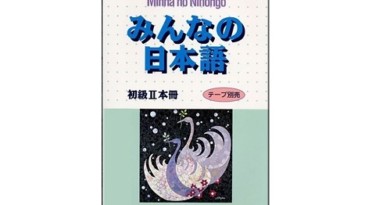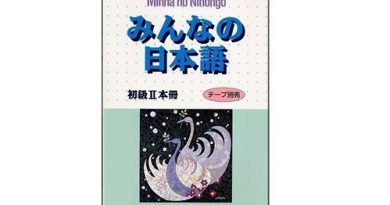Contents
- 1 Learn minna no nihongo lesson 23
- 1.1 6. Mondai
- 1.1.1 Exercise 1: Listen and answer questions
- 1.1.2 Exercise 2: Listen and choose the best picture
- 1.1.3 Exercise 3: Listen and choose true or false
- 1.1.4 Exercise 4: Choose the correct answer and give the true form
- 1.1.5 Exercise 5: Choose the correct answer
- 1.1.6 Exercise 6: Give the true form of the word
- 1.1.7 Exercise 7: Fill the appropriate verb in the blank
- 1.1 6. Mondai
Learn minna no nihongo lesson 23
6. Mondai
To do the “Mondai” section, you need “minna no nihongo” book and audios for listening
Exercise 1: Listen and answer questions
With this exercise, first you need to listen to the question and write down what you have listened and then answer the question according to your own understanding. You should not try to focus on clearly listening to each word of a sentence and miss the following sentences. You should listen it for the first time, answer the questions one by one, with the questions you can’t listen then listening to them the second time. After that, you can listen again and copy the words to improve your listening skill and remember words better. Finally, after listening and answering all questions, you can refer to the translation and the answer below.
Answer:
Translation :
1.こどものとき、どこに住んでいましたか。
Kodomo no toki, doko ni sunde imashita ka?
Where did you live when you were a child?
2.外国へ行って、みちがわからないとき、どうしますか。
Gaikoku he itte, michi ga wakarinai toki doushimasuka?
What should you do when you go abroad and do not know the way?
3.ひまなとき、なにをしますか。
Himana toki, nani wo shimasuka?
What do you do when you are free?
4.どんなとき、タクシーに乗りますか。
Donna toki, takushi- ni norimasu ka?
When do you take a taxi?
5.たくさんお酒を飲むと、どうなりますか。
Takusan osake wo nomu to, dounari masuka?
What happens if you drink a lot?
Answer:
1.ハノイに住んでいました。
Hanoi ni sunde imashita.
I lived in Hanoi.
2.近くにいる人に聞きます。
Chikakuni iru hito ni kikimasu.
I will ask the people who are nearby.
3.えいがをみたり、ほんをよんだり。
Eiga wo mitari, hon wo yondari
I will watch movies, read books, etc.
4.あめのとき、乗ります。
Ame no toki, norimasu.
I will take a taxi when it rains.
5.あたまがいたくなります。
Atama ga itaku narimasu.
I will have a headache.
Exercise 2: Listen and choose the best picture
For this exercise, before listening, you should look at the pictures to guess the content. When listening, memorize the keywords and compare them with the pictures to choose the best picture.
1.
女:すみません。国際でんわをかけるときどうしますか。
Excuse me. I want to make an international call, what should I do?
男:どこにかけますか。
Where do you call?
女:アメリカのともだちです。
I call my American friend.
男:じゃ、まず001を押して、次にアメリカの番号1を押します。それから友達の番号を押します。
Well, first press 001, next press the American number 1. Then press your friend’s number.
女:わかりました。どうもありがとうございました。
I got it. Thank you very much.
2.
男:すみません。みどり図書館はどこですか。
Excuse me. Where is Midori Library?
女:駅の前のみちをまっすぐ行くと、橋があります。
Go straight on the road in front of the station and you will see a bridge.
男:はしですね。
The bridge, right?
女:ええ。その橋を渡って、100メートルぐらい行くと、左にあります。
Yeah. Cross that bridge, then go about 100 meters and you will see it on the left.
Answer
1.(2)
2.(1)
Exercise 3: Listen and choose true or false
With this exercise, the listeners will listen to the conversation, then there will be a key point about the problem that will be raised in the conversation. The listeners must choose whether the content is true or false according to what they has listened. If it is true, select 〇 (maru) and if it is false, choose ✖ (batsu). In this listening section, you should pay attention to the concluding sentence to see whether that sentence is given in a positive or negative form in order to avoid being “tricked” when listening.
1.
女:すみません。この機械の使い方を教えてください。
Execuse me. Please teach me how to use this machine.
男:はい。まずここにお金を入れてください。次にこのボタンを押すと、カードが出ます。
Yes. Please put money here first. Then press this button and the card will come out.
女:このボタンですね。わかりました、ありがとうございました。
This button, right? I got it. Thank you very much.
★ ボタンをおしてから、お金を入れると、カードが出ます。
★ After pressing the button, then put money and the card will come out.
2.
女:最近、みんな電話を持っていますね。
Recently, everyone has had a phone.
男:ええ。旅行や出張のとき、便利ですから。わたしは出張するとき、パソコンも持って行きます。
Yeah. Because it is convenient when traveling or going on a business trip. When I go on a business trip, I also bring my computer.
★ 男のひとは出張のとき、電話とパソコンを持って行きます。
★ The man brings his phone and computer when going on a business trip.
3.
女:山田さん、それはなんですか。
Mr. Yamada, what is that?
男:中国のお茶です。体の調子が悪いとき、飲みます。
It is Chinese tea. I drink it when I feel sick..
女:それもお茶ですね。
That’s also tea, right?
男:いいえ、これは薬です。お酒を飲んだとき、飲みます。
No, it’s medicine. I take it after I had a drink.
★山田さんはをお酒を飲んだとき、中国のお茶を飲みます。
★ Mr. Yamada drink Chinese tea after having a drink.
Answer
1 (✖)
2(〇)
3(✖)
Exercise 4: Choose the correct answer and give the true form
With this exercise, you will choose the best answer from the answers that are shown, they are usually the verbs so in order to choose the correct answer, you need to pay attention to which nouns and verbs will go together. After choosing the correct answer, you must conjugate the verb to match the meaning of the sentence by relying on the following part of the question.
Example:
買い物に(いく)とき、カードを持って行きます。
I bring my card when going shopping.
Explanation : We use [いきます] here to complement the shopping (買い物); however, with [とき], [いきます] becomes いく.
Here are some exercises, after finishing, you can refer to the answers and translations below
The verbs : あります、借ります、わたります、でます
1.図書館で本を ( ) とき、カードが要ります。
2.道を( )とき、左と右をよく見なければなりません。
3.時間が( )とき、朝ごはんを食べません。
4.お釣りが( )とき、このボタンを押してください。
Exercise 5: Choose the correct answer
This is the exercise for reviewing the grammar structure [Vる/Vた + とき]. You will base on the completed clause to guess the meaning of the sentence and then give the best answer.
Example : うちへ(帰る、帰った)とき、「ただいま」と言います。
With this sentence, we use [Vた + とき] to show that the going home has been done, so the right answer is [帰った].
Translation : After going home, we say “tadaima”
Here are some exercises, after finishing, you can refer to the answers and translations below
1.(つかれる、つかれた)とき、あついおふろには入って早く寝ます。
2.うちを(出る、出た)とき、電気を消しませんでした。
3.朝(おきる、おきた)とき、家族の写真に「おはよう」と言います。
4.きのうのよる(ねる、ねた)とき、少しお酒を飲みました。
Exercise 6: Give the true form of the word
With this exercise, we will give the true form of the word to match the grammar. This is a simple exercise that makes it easy to memorize the grammars we have learned.
Example( 眠いです →眠い) とき、顔を 洗います。
Applying the grammars we have learned: Vる/Vない/Aい /Aな/Nの + とき~
Here are some exercises, after finishing, you can refer to the answers and translations below
1.( 暇です → ______ ) とき、遊びに 来て ください。
2.( 独身です → ______ ) とき、よく 旅行を しました。
3. 母は( 若いです → ______ ) とき、とても きれいでした。
Exercise 7: Fill the appropriate verb in the blank
With this exercise, you need to reread the vocabulary that you have learned in the lesson combined with the information in the sentences such as particles, nouns, … to be able to guess and choose the best verb. Moreover, in order to avoid confusion in verb conjugation, you also need to pay attention to grammatical patterns in the sentences.
Example : この お茶を (飲む) と、元気に なります。
Translation: When I drink this tea, I feel better.
We choose 飲む (to drink) because the subject is お茶 (tea), and we will use the grammar structure [Vる+と] here.
Here are some exercises, after finishing, you can refer to the answers and translations below
1.あの 交差点を 左へ (______)と、銀行が あります。
2.この つまみを 右へ (______)と、音が 大きく なります。
3.この 料理は 少し お酒を (______)と、おいしく なります。
Above is instruction to Learn minna no nihongo lesson 23. See other lessons in category : learn Japanese with minna no nihongo or: Japanese for beginers.

